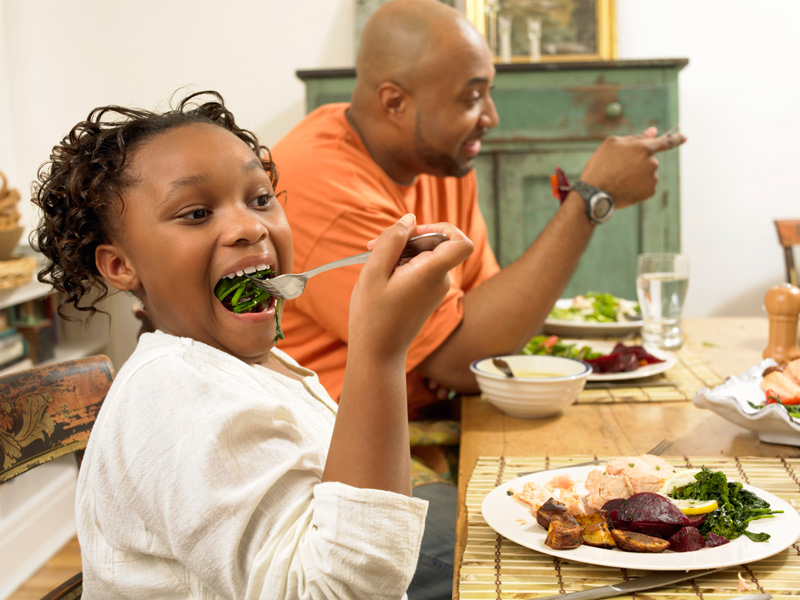
Children’s Food
We are starting a new year full of purposes and objectives that we have already proposed with the “back to school” but are still in the bedroom. Perhaps one of those goals was to improve the diet of the children in the house and focus on acquiring good eating habits. If so, this article can help.
WHERE DO WE START?
Using the old metaphor of the house, where would you start building it? Did I hear, “through the foundation”? That’s right. The foundation of your child’s diet is your diet, yes, yes, yours. So says this scientific article where it concludes:
To promote healthy behavior in young children, the strategies quebaking are effective, emphasizing the behavior of parents and the configuration of the home environment.
In short, setting an example is the key, remember that you are the role model for your child and also if you eat a diet rich in fruits and vegetables, as well as unprocessed foods, it is to be expected that in your home there will be more presence of these foods and the child will perceive it as “normal”.
But of course, a child today is not closed all the time at home with his parents, so the environment also influences the food, from the advertising he sees on television to the food of his friends, through all the beliefs that society has about what a child can and can not eat. We are going to analyse some of them in the following paragraphs.
BELIEFS
Let us first define it as a belief: “A belief is the feeling of certainty about the meaning of something. It is a personal affirmation that we consider true. Beliefs affect the perception we have of ourselves, of others and of the things and situations that surround us”.

Throughout life, we fill our backpack with beliefs that we acquire in our family, friends, culture, religion and society in general and these influence our attitude in a positive or negative way depending on the belief. But I have good news. We can change our beliefs! Let’s go with the first example within the topic we are dealing with today.
“Children don’t like vegetables. Let’s question it: Does no child eat vegetables? Why do some of us have to eat the vegetables that my parents tell me they eat more than others? We are generalizing. Unconsciously, through certain comments, we transmit that the vegetable is something boring and that it costs to eat “should he eat vegetables every day? poor child” or “if you run out of vegetables we will go to the park”. In the end he ends up perceiving that very good will not be if he deserves a reward for eating it. What do you think about vegetables? Do these beliefs help to promote the consumption of vegetables? Is there a way to eat vegetables that is not boring?
“Children can drink more sugar than adults because they need a lot of energy to grow. Definitely not. Whoever is going to grow more (through genetics) will feel hungrier and eat more, but not by eating more will be taller. Also, the fact that it needs energy does not mean that it is worth any energy. Wouldn’t you put gasoline in a diesel car even though both are fuels for cars? If your child is hungry because he is growing, what quality energy would you give him? Here are some examples: nuts, bananas, dried fruit, wholemeal bread, cereals and pasta, legumes, unprocessed protein (fresh meat and fish or eggs), dairy products without added sugar.
“Eating healthy is boring or very complicated.” So let’s ask ourselves again: do all the mushrooms people who eat healthy get bored eating? Is it the food that brings you fun? Is it more complicated to prepare a salad than a pasta dish? It can work out for you if you always end up practicing the pasta dish, in the end it’s what you’re most familiar with. So I encourage you to practice other simple and healthy dishes so that they end up being easy to cook for you.
Continue this list of beliefs you have in your “backpack” and you will see that if you go deeper into them you can question them and find better ones.
GENERAL RECOMMENDATIONS
Congratulations! If you are at this point it is that you have already gone over the foundations of the house, you have built firm pillars based on positive beliefs that help you to have a proactive attitude towards the feeding of your children and finally you are preparing to build the roof. In this section of the house are the nutritional recommendations based on scientific evidence and carried out from your example. They will be of no use if the child does not see them reflected in his or her family environment or if they acquire negative beliefs about them, which is why I consider them to be the roof and not the foundations.
So that you have an idea of how often it is good for your child to eat meat or fish or eggs, etc. I leave you this table.
QUANTITIES OF RATIONS: Depending on the age group and the individual characteristics of each child, the amounts can vary considerably. In addition, you should know that children have a much more developed ability to self-regulate hunger and satiety than adults for the simple reason that they are less influenced by educational or emotional aspects that may incite a person to eat more or less. However, I leave you the equivalent of a ration relying on your judgment and your child’s ability to self-regulate and adapt to his or her needs.
TIPS AND ADVICE
With breakfast, mid-morning and snack meals where children eat more unhealthy products, I thought I’d leave you some ideas for healthier options and give variety to such shots. You will find it in the table below.
In addition to offering healthy foods, what do you think would increase a child’s motivation to eat well? Involvement and participation in their own eating. Using play and imagination as a vehicle to achieve this is the key! So I also leave more ideas for you to finish molding and play with your children to eat better.
Detectives in the supermarket. Try to find products suspected of carrying more than 10% sugar. (
Junior MasterChef. Choose a recipe (approved by the healthy committee) and an adult kitchen helper who will give you a cable – just follow the steps!
- Menu by colors. For each day, choose a food from the table above and write it on a weekly menu with its corresponding colours.
- You already have a well-built healthy eating house, with its foundations, walls and roof. If this is firm, it won’t matter that from time to time the child will eat some unhealthy food so, little by little, he will be learning what is normal and what is exceptional, that he should also know it.
If you have any doubts about the nutrition of your little ones and need help in Nutritional Coaching we will be happy to help you find the most suitable diet for the whole family.

